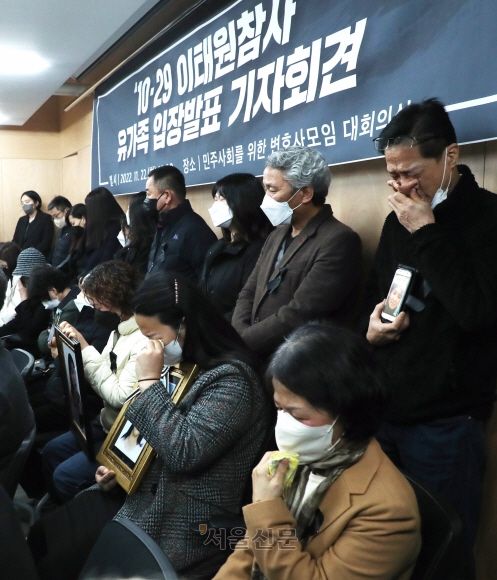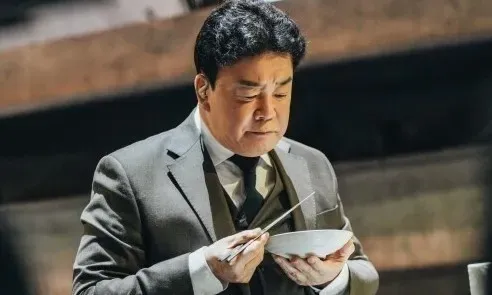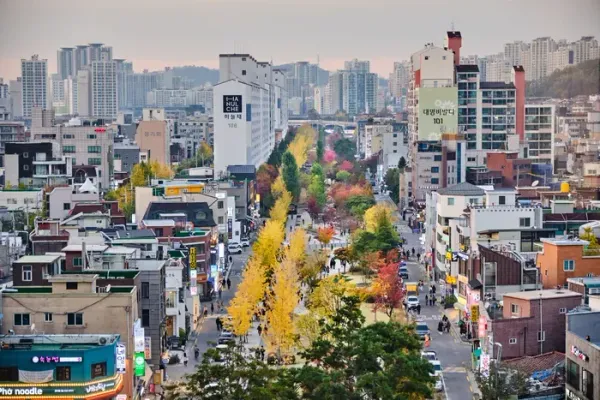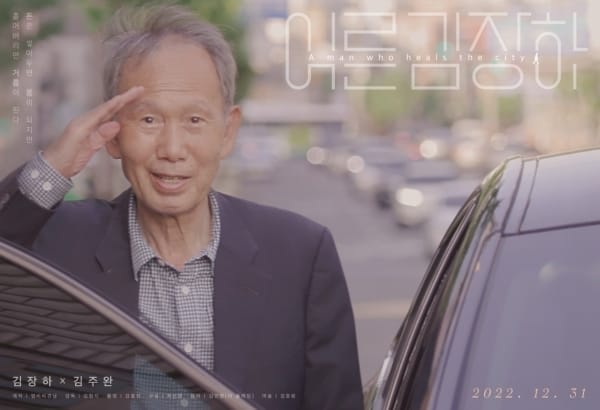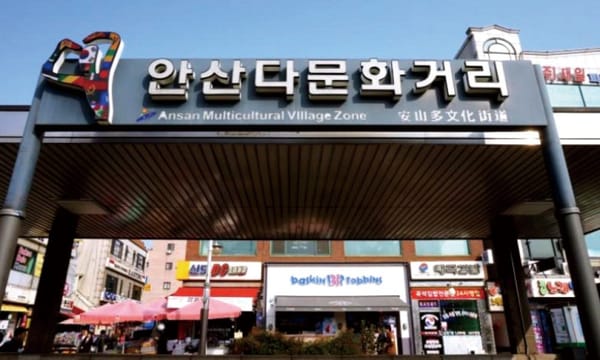Photo: Families of Itaewon Disaster victims hold their first press conference. Credit: Seoul Shinmun.
In the aftermath of the October 29 Itaewon Disaster that killed 158, the Yoon Suk-yeol 윤석열 administration has maintained a laser focus on not allowing this to become another Sewol Ferry Disaster. The 2014 disaster, which killed 299, spelled the beginning of the end for then-president Park Geun-hye 박근혜, as the conservative administration made enemies of the parents of the mostly school-aged victims, who blamed the government for its incompetent rescue effort. Public opinion steadily deteriorated as a result, eventually feeding into the Candlelight Protests of late 2016 that ended with Park’s impeachment and removal in March 2017.
A month out from the disaster, the Yoon administration appears to have succeeded thus far. It quickly declared a week-long national period of mourning, making it seem uncouth for the Democratic Party to play politics immediately after the incident. The government quickly set up a public memorial for the victims, and Yoon duly made the rounds of memorial services held by leaders of all major religions. In 2014, then-prime minister Jeong Hong-won 정홍원 당시 국무총리 tendered his resignation eleven days after the Sewol Ferry disaster. By comparison, the Yoon administration has yet to lose a single senior official to resignation, despite calls from the opposition. Yoon’s approval was already at rock bottom, but at least it did not sink any further. (See Weekly Polls below.)
Missing in all this, however, are the voices of the victims’ families. By all indications, this is deliberate. The administration has taken pains to prohibit the names of the victims from being published, ostensibly out of privacy concerns, making it difficult for victims’ families to meet and organize. When asked at the National Assembly 국회 whether the government planned to afford the families a chance for a meeting, Interior Minister Lee Sang-min 이상민 행정안전부 장관 claimed that the government did not even have a list of victims and their families - a cheap lie that was immediately exposed. A member of one of the victims’ families said it took him 17 days after the disaster to find families who were similarly situated: “We received no help and had to act as if we were running a covert operation. Are we not allowed to meet? Are the victims’ families considered anti-government?”
The families did manage to meet, however. In the first press conference held by victims’ families on November 22, representatives of 65 of the 158 victims were not in a friendly mood toward the government. Gathered in the conference room of Lawyers for a Democratic Society 민주사회를 위한 변호사모임, a progressive civic group, the families fought back tears as they demanded a presidential apology, a thorough investigation involving the victims’ families, communication among the victims’ families and a proper commemoration of the incident.
In their statement, the families said the government “evaded responsibility and gave false explanations from the beginning, causing irreparable harm to the victims’ families.” The families also criticized the Yoon administration’s actions as an attempt to hustle the victims’ families offstage, rather than as sincere gestures of condolence: “The government unilaterally set up a joint memorial site that did not name any of the dead, declared a mourning period without once asking the families, and announced it would provide financial assistance for the funeral as if it was handing out charity.”
The ruling People Power Party 국민의힘 tried to downplay the press conference, with PPP leader Jeong Jin-seok 정진석 saying: “Their opinion does not represent the families of all 158 victims.” But it is difficult to imagine that the families who did not participate in the press conference would be more forgiving, in light of mounting evidence of gross governmental negligence. (See previous coverage, “Itaewon Disaster: Failure at Every Level.”) At a minimum, it appears unlikely that the Yoon administration can continue to insist that Interior Minister Lee, who was responsible for disaster response, must remain in his post.
Meanwhile, a subtle split is emerging between the president and his party. The PPP surprised many when it agreed to the Democratic Party’s proposal for a legislative investigation, whose scope included parts of the Office of the President 대통령실 and the Supreme Prosecutor’s Office 대검찰청, exposing Yoon and his right-hand man, Justice Minister Han Dong-hun 한동훈 법무부장관, to potential fallout from the investigation. After the presidential office expressed its displeasure, the party abruptly made a heel turn and began boycotting the investigation. Nevertheless, the conservatives are boxed in: refusing to participate only reinforces the perception that they are doing everything they can do to evade responsibility.
The special committee investigation will last for 45 days, extending well into next year. During that time, the Itaewon Disaster will continue to be the top political story. By mid-January 2023, the parties must begin preparing for Assembly Elections 총선 to be held in April 2024. By the conclusion of the Itaewon Disaster investigation, the PPP will have to make a determination: is the president an asset for the election, or a liability? The watershed moment will come early next year when the ruling conservative party holds its national convention. If an intra-party critic like former presidential candidate Yu Seung-min 유승민 takes the party chairmanship, Yoon Suk-yeol may be kneecapped by his own party.


